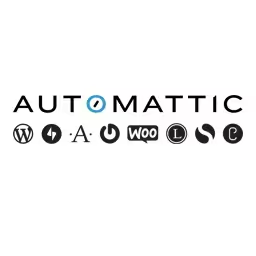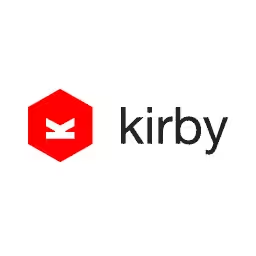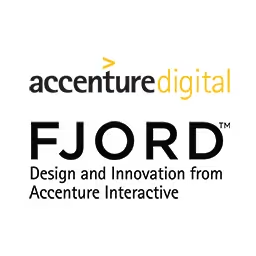Ariel Cotton

Ariel Cotton is an interdisciplinary artist and designer. Her work straddles the boundaries between art and technologyranging from comics to product design to electronic installations and devices. Her work has been featured internationally in solo and group exhibits in locations and events such as the MoMA, the Brooklyn Museum, Maker Faire and Pioneer Works. It has been written up in publications and blogs including The Huffington Post, Make Magazine, Laughing Squid, Technically Brooklyn, and The Brooklyn Paper. Cotton's work can be viewed here.
Talk: The World Is Your Interface
Just because you've closed Adobe CS and shut down your computer doesn't mean you're done designing. When you stop working on a product with user needs to consider, it doesn't mean you have stopped interacting with users. Design principles are implicit in every facet of life, from conversations with people to navigating a city to helping a loved one get through a difficult time. This talk will examine how traits such as empathy, usability, structure, aesthetics, and intuition cross over between design and the rest of life, and how going through painful, uncomfortable and scary experiences can turn you into a better designer.
Transcription
Ariel Colton: Hello, everyone, and good morning. Welcome to Berlin.
My name is Ariel. I’m a UI/UX designer and a comic artist, and I make interactive art with electronics and Arduinos and things like that. I spend a lot of time working with design, art, and tech, and trying to merge the three and converge, find where they converge.
This is a design talk mostly, and it’s called The World Is Your Interface, and it’s about design. It’s about life. It’s about empathy, pain, and everything in between. It’s about how design principles and life principles are pretty much the same thing. How design borrows from life, how life and design influence each other, and how developing empathy and mindfulness can make you into a better designer. It gets kind of anecdotal.
What is design? According to Wikipedia, design is the creation of a plan or convention for the construction of an object, system, or measurable human interaction. When you think about it, that’s a pretty broad definition. That kind of led me to think, on some level can’t everything in the universe be categorized as design?
Is this design? [Photograph of an apple] Is this design? [Photograph of a cow] Is this design? [Photograph of the solar system] I’ll leave it up to you guys to decide, but here are a few things that I think count as design:
Music: Led Zeppelin is one of my absolute favorite bands, and I’m so obsessed with them, as a matter of fact, that I spend a lot of my spare time listening to their isolated tracks. Music, such as Led Zeppelin’s, is really just the orchestration of many different parts pieced together, mixed together, mastered together into a product that’s there to satisfy the ears.
Recently I read a really interesting article on the BBC about why music makes us feel so good, which is something I wonder about a lot. It said that apparently music activates the paralimbic and the limbic centers in the brain, which are the same reward centers that are stimulated by food and sex. In theory, you could say that music is a product that’s designed to stimulate those areas of the brain.
Cooking is design, in my opinion. It’s the synthesis of many different ingredients brought together and pieced together into a sum that’s greater than its product. It’s a product that’s designed – I mean a sum that’s greater than its parts. You could say that it’s a product that’s designed to fill the stomach and satiate the taste buds. Julia Child is one of my favorite examples of this. I love her.
Cities, city planning, buildings, streets, street layouts, I think of cities as layouts that you navigate with your entire body instead of with just a mouse, a hand, and your eyes. I mean have you ever – you know I travel a lot, and sometimes I stop. I mean every city feels so different to me, and it’s really quite fascinating. You know you just – I mean have you ever stopped and wondered why a city, like say New York and Paris, you know, why do they feel so different from each other? Different cities were designed at different times to fulfill different needs and to express different cultural philosophies: New York, Paris.
Yeah, so for example, I love this example. In New York, Manhattan is a perfect grid, and this was a result of the commissioner’s plan of 1881, which – well, it was shortly after the American Revolution, and there was this spirit of freedom, equality, and liberty. We shouldn’t let any – there’s no hierarchy. We’re all equals here. They tried to exemplify that by using this uniform grid. I think that counts as design.
The human body, on some level, counts as design. We’re glorified meat devices with different input/output, with different inputs and outputs. I mean we even design devices based on ourselves, and those devices are known as computers.
That brings me to my next point, which is that design is all around us and nothing is actually original. Everything is a reiteration of everything. Everything is just recycled.
What we can infer from what I just went through with all the different design examples that come from real life is that many guidelines to navigating one’s way through life can also be applied to design and that design in life influence each other in many complex, profound ways. As such, I don’t think people should be afraid to borrow from the world around them because, as I said, everything is a reiteration of something else.
I notice that lots of people are really obsessed with being original and that’s not a bad thing, but at the same time I think that lots of – you know I see lots and lots of startups. I feel like disruptive and innovative are every startup’s favorite words ever, and I mean I think at times that can actually be kind of harmful because I don’t think you should be placing things like being innovative and disruptive ahead of good design. And good design doesn’t always require that you reinvent the wheel. Sometimes what you have around you works perfectly fine. There are many, many examples of designers who borrow from the world around them, and I think all design borrows from the world around us to some extent, so yeah.
Some examples of borrowed design: biomimicry. Biomimicry is when designers borrow from Mother Nature to solve design problems. Here are some examples. How animals move is one thing. I have a friend who builds walking robots, and he’s been doing this for many years. I remember when he was first getting started on it he would endlessly pour through YouTube videos for reference just to watch how animals moved. That’s how he got his inspiration. A lot of the time birds are used as inspiration for airplanes.
There’s a project going on at Harvard to develop these little – so there’s a big problem with bees, apparently. I don’t know how many of you are aware, but lots of bees are dying, which means that could cause us problems with our food because of all the pollination that’s required for our food to grow. Harvard is developing a bunch of little flying autonomous robots that can go from flower to flower. Yeah.
BigDog is developed by Boston Dynamics, which is a robotics company in the States. This is a pack mule built for military purposes, and they quite literally reference the way dogs move. Look up some videos on YouTube later. It’s really interesting.
Yeah, planes and birds. There are the little bees that Harvard is working on developing.
It’s not just – biomimicry isn’t just limited to the way animals move either. It’s also there are lots of really beautiful examples of things like textures. One of my favorite examples, and one of the most famous ones ever is burdock burrs and Velcro. They were invented by the Swiss designer Georges de Mestral, if I recall correctly. One day his dog was running around in the woods, and he got covered in burrs. As Georges was picking burrs out of his dog’s fur, he began to examine how they clicked together. He was so fascinated by it, he ended up developing a whole product, and that’s Velcro.
Okay, another example I really like is there’s an initiative to – not an initiative. They’re making swimsuits out of material that’s similar to shark skin because it helps professional swimmers move more efficiently like Michael Phelps.
Another example that I really like of design borrowing from the world around you is icon design and metaphor. I mean what I really like about it is a lot of the time icons are used to symbolize really abstract and cerebral concepts. But you know a lot of the time it’s really difficult for people to understand theory and abstract concepts if you can’t find an application for it or a real world analog to it, and icon design is a pretty good way to do it. It’s one of those little things that we all take for granted now because we all have personal computers, and we all have the Internet.
But once upon a time, you know, back in like the ‘70s and ‘80s, you know, when personal computing was just becoming – it was still kind of a novel thing. I mean people were just getting used to the concept of files and directories and having a trash where you can drag your files to. I mean how do you express these concepts when they’re brand new and people aren’t used to them? Xerox PARC and Apple were two of the first companies to take on this challenge, so these are some early Mac icons. Apple and Xerox PARC set the precedent for everybody today, and their entire icon libraries you can use on the Internet like font awesome, which is one of my favorites, my go-to. Google also has material design.
Now referencing psychology, so the examples I just went through of design referencing the way things work in the real world and in life around us, they were all pretty literal, and they all reference objects and things and nouns and places and people. But a lot of the time it’s not so literal. You know design is really about psychology and, you know, you have to reference human behavior in order for it to work.
The rest of the talk is going to be spent on the psychological stuff, some things I’ve learned, and lessons I’ve sort of collected over the years. The first one being, forget your personal dream, which I learned from my wonderful design mentor Peter Dutro, who was one of the founders of Occupy Wall Street, incidentally. What this means is when you’re designing, the needs of your users should be paramount to your personal preferences. It might seem obvious to some of you. It might not be as obvious.
I think that, coming from art school, there are lots of people who graduate as fine artists, and then they go and the work in design jobs. They don’t really understand. You know they’re just like, oh, you know, this is applied art. I can just make pretty things.
But that’s not quite the case. You can’t really follow your – you don’t always get to follow your own vision. What your users need is the most important thing. If you want to follow your personal dream, you should probably be an artist.
Now hang on a second.
One of my favorite/worst examples of a designer following his personal dream that I’ve ever witnessed was when I was working this past year on a project for a design company. They wanted to redo their website. They wanted it to include an about section with their mission statement, a case study section with all the work they’ve done for their clients, a social media feed with Twitter and Instagram hashtags, and they also wanted to have an internal social media component for all their employees and contractors all over the world so they could log in. There’d be a forum, and they’d post in the forum. They could update. They had user profiles, you know, kind of like somewhere between Reddit and Facebook.
Yeah, you know, it’s fairly straightforward, but I was taking over this project from another designer. For some reason this designer had this crazy concept where he wanted to put all of it on one page. He wanted to make the whole thing on a one-page website. Just think about that for a minute, you know, a social media website with login functions and profile creation and a forum and case studies and an about page and an infinite scrolling feed with Twitter and Instagram. I mean maybe, maybe you could implement it. It would probably be a totally bitch to implement. But even more importantly than that, it would be horrible to navigate.
I mean, you know, when I first got this I was just like, really? The creative director said, “Oh, he just wanted to experiment, so I let him go with it.” I was just like, okay. Then I took over and completely changed it.
Audience:: [Laughter]
Ariel Colton: Uh, yeah. Now this concept also applies to interpersonal relationships, the personal dream. Either way, you’re considering how you think your actions are being perceived versus how your actions are actually perceived. It took me a while to internalize this.
When I first graduated from art school, the land of masturbation and personal dreams, it took a lot of time to learn. I went through several design jobs in the first several years and a bunch of mishaps. There was one startup where I was let go after two months because they just couldn’t tolerate my demeanor.
I was basically the de facto creative director there because they were so small and I was the only designer onboard. When my ideas clashed with the COO’s ideas, I let her know in a very blundering, indelicate way. I didn’t like – I mean I didn’t start cursing at her or anything, but I was just kind of passive aggressive about it. But the CTO was not pleased, and they let me go with no warning. That was a while back, but yeah.
So anyway, I eventually got another design job, and it was better. We got along better, and I got freelance clients, but I still was really sloppy. I was very oblivious. I was kind of in my own world. I had horrible habits of not thoroughly reading emails and not paying attention to details. My clients would get upset with me because I would miss out on small details, and then I would charge them more money. It was a big mess, and it was costing me my livelihood and my design practice.
Yeah, and I was kind of like that in my own personal life too. I’d never left New York. All my friends were also native New Yorkers who were about my age and the same socioeconomic background, same demographic. I was kind of – I was unaware of many things.
But things changed a lot this year, which brings me to my next point that a lot of the time pain and discomfort, going through the two of them, going through suffering creates empathy and understanding, which can make you a better designer. I went through some pretty drastic life changes this year. A year ago my boyfriend and I broke up, and he was my first love, and we were together for five years. Then I left everything and everyone I’d ever known and grew up with behind and came here to Berlin.
It’s just been such a whirlwind year, you know, filled with traveling and new experiences. A lot of them were euphoric. Some of them were devastating. I mean it’s really been more change and a greater concentration of ups and downs in this year than it’s been in the last half decade or so.
It kind of opened up the world for me, this whole experience. I mean I kind of – I listen to songs differently. All the songs, all the books, all the art and films that are about heartbreak, suddenly they all made sense. And talking to my friends about it made sense. And hearing them complain about being single or being heartbroken made sense. I was relating to everyone with a lot more empathy than before.
Yeah, that’s Tempelhof. If any of you guys are Radiohead fans, you should put on Kid A and go to Tempelhof on a rainy day and walk down the road. It’s really beautiful.
Audience:: [Laughter]
Ariel Colton: Yeah, and traveling is very educational too. I mean I don’t think I need to say that. I’m reiterating it, but I means it’s been eye-opening.
There were lots of little things I took for granted in New York that I didn’t really – I mean even stupid little things like wearing deodorant that you have to apply twice a day. I mean here in Berlin, no offense, but the deodorant kind of sucks. Yeah.
Yeah, learning other people’s perspectives, that’s kind of what this whole year has been. I’ve been meeting lots of new people from all over the world and hearing their stories. Talking to people from East Germany about what their experiences were like before the wall came down. Talking to people from other continents.
There was one woman whose mom used to go to Kowloon, to the walled city of Hong Kong and get her teeth checked by unlicensed dentists and, yeah, anyway.
What’s my point in all this? My point is going through new, painful, uncomfortable experiences helps you gain understanding, opens up the world to you and, consequently, can make you a better designers. I mean if you’re living under a rock and you don’t get out and talk to people, how can you really –? How can you be a designers if your job is to help people and you’re living under a rock? How can you understand people’s problems? How can you solve people’s problems if you don’t understand them is what I’m trying to say.
Yeah, so I added this. I put this addition in my talk just last night after I had a really interesting conversation with one of the other speakers here, Frank Rausch. He’s going to be speaking tomorrow morning. He’s giving a really awesome talk on typography and code.
We were talking about typography, and he said something really interesting. He said that he prefers designing interfaces for English rather than German. I was just kind of like, well, you know, I never thought about that. Why? I’ve never had to design for different languages, just English. He said, well, German words are longer, and they’re kind of a pain to squeeze into a small layout compared to English. I was like, wow. Anyway, I thought that was a pretty good example of what I mean, you know, leaving New York behind and talking to designs from around the world who have had to design in other languages. I never thought about that until last night.
Yeah, if you want to be a good designer, reach out to people. Talk to them. Ask questions. Let them complain about their lives. Listen to them talk about their problems. Just be a sponge, and don’t be presumptuous, and don’t assume anything. If any one of you, if you guys are going through painful situations now, I mean, my heart goes out to you, and it’s not fun, but take solace in the fact that you can use it to become a better designer, potentially.
It brings me to my next point that I see life as a study in UI/UX design. Talking to people is user research for me. It’s what I was saying about being a sponge and listening to what people have to say. It doesn’t come easily to me always. I mean I’ve always – I used to be really socially oblivious. I’ve had to work hard on it. I still have to force myself to have constant vigilance. Yeah, Harry Potter.
Yeah, at one point listening and paying attention was literally my design homework. I took an industrial design class in college, and I interviewed my then boyfriend about his life and his everyday routine. I took notes on some of the problems he would run into on a daily basis, and one of his big problems was taking the subway to band practice because he’s a bassist, and he would have trouble lugging his bass amp with him all the way from Brooklyn to Queens or wherever the hell he went. I prototyped a foldable bass amp. It didn’t actually work. It was a prototype, but yeah. It looks –
Yeah, where was I? Yeah. Life. UX. Yeah, human centered design, I think, reflects why it’s so important to treat life as a UX study because, you know, that’s really the best UX education you can get is just watching how humans behave and listening to what people have to say. This is what the whole concept of human centered design is about. It’s the principle that problem solving in design is more effective if the human perspective is included in every step of the process.
Yeah, I’m sure many of you know Don Norman. He’s one of my absolute favorites. He is so great, a cognitive scientist, usability designer, and he wrote Design of Everyday Things, which if you haven’t read, you absolutely – and you’re a UX designer, you absolutely should read it. It explores the psychology of using everyday materials and everyday objects, and how design is the communication medium between object and how this communication can be optimized to give users a more fulfilling experience.
In this book he has lots of case studies where he observes users interacting with everyday objects, not knowing how to use them, getting frustrated, and he takes notes on why they were frustrating to use. I’m going to talk about one example from the book, which is a colleague of his who was trying to get out of a building.
One second –
His colleague was trying to leave this building, and there were two sets, two rows of six swinging glass doors each. He went through one row of doors, and he was going to exit through the other row, but he tried pushing and it wouldn’t budge. It just wouldn’t move. He couldn’t get back out there other way, and he was kind of like, “Oh, God. What do I do?”
He was stuck there for a minute or two wondering how he was going to get out of there. He kept trying to push. Nothing was happening. Then a group of people came through and he was able to leave with them. As he left, he saw what the problem was. There was absolutely no indication of where the hinges were on the door, so he was pushing on the hinged side.
The doors had no handles. They had no sign of the hinges. It was some kind of modernistic, futuristic concept where the doors were supposed to be like these glass panels with no decorations, no elaborations. Just glass panels. But when you don’t put those little design cues, they’re just really – I mean users need them if they’re going to interact with the objects. I mean no matter how cool your object looks, if your users have a tough time using it, then it’s a failed object.
Yeah, small cues, enormous effect. Yeah, no. I really liked how Don Norman – he was very snarky about it in his book. He was kind of like, oh, you know, there were these, pretty doors. Probably won a design award.
Yeah, and my friend Joe back in Brooklyn, he says design is just psychological engineering. He’s a software engineer, so it’s – yeah, no, it’s exactly what it is.
Again, back to my point from earlier, which is that you can use these same principles to design interpersonal interactions. I’m going to go through a couple of examples.
Example A: My friend was having troubles with her roommate. She was in bed one night at 4:00 a.m., and her roommate woke her up with really loud sex. She confronted him the next day, but he was so indifferent and nonchalant about the whole thing. He’s like, “Oh, I can’t promise that it won’t happen again.”
My friend was just kind of like, “So what do I do?” I said to her just pretend your roommate is an illiterate computer user, and you’re designing a product for him. You have to make it very, very easy to use. You might complain about it a little, sure. But in the end you find a solution to the problem, right? I mean sometimes this works. In this case I have to admit it didn’t, but you know.
Another example with my other friend, he really, really loves to debate and argue for fun. He’s pretty good at it. He’s quite brilliant, and he’s got some wonderful ideas. But other people who don’t know him as well don’t always take kindly to his manner. He’s pretty blunt and tends to emphasize being correct over being tactful.
So, you know, sometimes he’ll complain to me about it. And he’ll be like, “Why don’t people,” you know, “I’m not saying anything insulting or mean. I’m just arguing. You know I’m just being correct.”
And I said, you know – my response to him is always the same. You know it’s not always what you say. Sometimes it’s also how you present it. I mean otherwise why would we need user interfaces for our objects? He’s an electrical engineer, so I figured maybe the user interface analogy would work.
Mindfulness: That’s really what this all boils down to, you know, just being, listening to people, observing the way people interact with the world around them, and tuning into the world. It’s all an experiment in mindfulness.
What is mindfulness? It’s the state of being deeply aware of your thoughts and surroundings. It’s kind of like meditation. It’s when you can just stand, listen to your thoughts, watch everything, just acknowledge that it’s there, and be really aware. Yeah, tuning in, listening to people, observing human behaviors, paying attention to details, it’s all an exercise in mindfulness.
Now in the design context, what is mindfulness? Some examples of it are organization, maintenance, knolling. How many of you know about knolling? Okay. Yeah, so knolling, it’s an organization practice. It’s when you align objects around you at 90 and 45 degree angles, and you just place them in very – it’s a method of organization. It’s kind of like this, basically.
Yeah, so I’ve never been good at this stuff. I’ve always been kind of messy. My studio back in Brooklyn used to be so many, one day I found a heap of mouse droppings under a giant pile of books and papers.
Maintenance, that’s also something I’ve really committed to working on this year. I used to – so I mentioned earlier before that I make interactive projects too, not just UI/UX on the Web, but I also make stuff with electronics, robotics, and conductive ink and LEDs. I used to – I’ve had a few art shows with interactive stuff, and I was always so focused on churning out the final result that I didn’t really – I neglected critical components, and they would fall apart really quickly or start malfunctioning. Sometimes I was able to pass the glitches off as, oh, part of the art project. But, you know, so I’ve been working a lot on that.
One way I’ve been working on organization is making lists - really, really helpful. I even knoll in my notebook now. I have blue for everything that’s design related or work or freelance related, and then I have black for art related stuff or journal entries or comics.
So, yeah, mindfulness. I’m using Dieter Rams here as an example because he was a very – I mean like most great designers, very, very mindful in his practice. And particularly in regard to sustainability, he was very environmentally conscious. Yeah, there’s this quote.
“We have to move away from the throw away habit. Things can and must last longer. They must be designed so that they can be reused. We need to take more care of our environment. That means not only our personal environment, but also our cities and our resources. That is the future of design to take more care of these basic elements. Otherwise I’m not sure what the future of our planet will be. So designers have to take on that responsibility.”
That’s an example of work that he did. He worked at Braun, and he was big on – he came from the school of functionalism. He initially wanted to be an architect. The functionalism school, I mean here in Berlin there are tons of examples. Functionalism is the idea that you’re building. It’s what it sounds like. It’s the architectural design of a building should just follow its purpose. No ornamentation, nothing extra, just very plain, clear, and simple in its purpose.
Personally, I am not really a fan of functionalism. I really like fancier, more ornate stuff. Paris is probably my favorite city in the world in terms of aesthetic. But I included it anyway in this talk because I do think it’s a good example of mindfulness, which is being mindful of the purpose of the object you’re designing and what people’s needs are.
Yeah, Dieter Rams was going to be an architect, but he ended up using those same principles when he switched over to industrial design, as you can see. Yeah. Unfortunately not all designers are as mindful.
One of my biggest pet peeves when it comes to lacking mindfulness is confusing visual design and UI/UX design. It’s when you – there are so many designers out there who create these gorgeous, beautiful interfaces. They look great. You know you could hang them up in a gallery somewhere. Print them out; hang them up as posters maybe. But they’re horrible to navigate.
I’ve worked with designers, print designers who think it’s okay to have links, and hyperlinks text, and regular text be the same color. I’m just like, “But how?” You know they just don’t get it.
Yeah, one example of this that I really, really hate is iOS. I have been a staunch Android user for a long time. What I really don’t like about iOS, Don Norman and Bruce Tognazzini, another really great designer, they wrote a whole article that explains it really well, which is that Apple has taken its simplicity fetish and kind of put it at the expense of usability, unfortunately. That’s also a really common misconception that simplicity and intuitiveness are one in the same. They’re not. They’re really, really not. It’s a lie.
Simplicity, the problem with Apple’s products a lot of the time and specifically with iOS is they think everything can be distilled down to one button or, you know, just a blank, plain screen with a bunch of the controls obscured. They resort to swiping. You know two finger swiping means the screen gets bigger. Three finger swiping – you know, I don’t even know, but it’s not initiative. How are people supposed to know what swipe equals what just off the bat? They don’t even have a back button for iOS, unlike Android. Yeah, so that’s one example.
Oh, and another thing: modes. Modes are when a function has several controls depending on the context in which you use it. Yeah, Apple used to have – it gets really confusing depending on the context in which you’re using that control. Apple used to have a strict no modes policy back in the ‘80s. Somewhere along the way they flipped it around, so yeah.
How did I begin to think about mindfulness? It was partially the realization that I was haphazard in my design work, and I needed to start paying attention to details. Part of it was also needing a way to cope with all the emotional horrors that I went through with the breakup and moving here and just being really far away from all my friends and family. There were days when I just – I mean the pain in my heart was so great, it just was weighing my limbs down. I could hardly even move. It was just – I was like, ah, when will it stop? When will the pain end? When will it end? It was like beating my head against a wall.
But then after many months of this, an epiphany began to set in, and that was, well, okay. You know thrashing, screaming, yelling, and wishing the pain would go away isn’t really doing anything. It’s like all this pain. You know sometimes maybe instead of trying to run away from it, maybe I should just acknowledge that it’s here and get to know it. Be mindful of it, and just hold it, embrace it, and get acquainted with it. It’s here. It’s not going to be here forever, but it’s here now. Just let it be.
Yeah, part of how I came to that realization was through my art making, actually. I’m working on a graphic memoire of my year here and all the heartbreak and all that stuff. I know it sounds very Eat, Pray, Love, and maybe it is, but anyway, yeah. Art is really a form of meditation. I really believe it is because all those hours that I spent just working on each and every drawing. You know I work in very, very fine detail, my drawings. Each one of these panels you see took me hours, sometimes days to make. It’s really quite meditative. You’re just sitting there, and you’re contemplating the event that happened in your life as you’re drawing it and kind of just you’re processing it.
When you make art about it, you’re forced to confront it. You’re forced to confront all the pain or whatever feeling you had during that moment. You’re really forced to get intimate with it because that’s the only way you can make anything that’s sincere.
Another thing I began doing was taping massive sheets of paper onto my wall and writing kind of like a journal, I guess you could say.
Yeah, the end result of all this was that I kind of began to worry a lot less about other things such as money, work, and artistic success. Lots of lots of things that I spent the last half decade worrying about, I don’t really worry quite the same way any more. Filtering out these worries has kind of put me less in my own head, and it’s freed me up to focus on things like people around me, what’s going on in my surroundings, books that I’m reading, or articles I’m reading. It’s just kind, you know, now that I’m no longer all fogged up by all these stupid little worries as much as I was, I’m focusing a little. I’m a little more present.
I’m still quite neurotic. I know this is a huge stereotype, but I’m Jewish and I’m a New Yorker, and that’s kind of the way we are.
Audience:: [Laughter]
Ariel Colton: It really is true. Yeah, so I mean it’s never going to completely go away, but at least I know now that it’s a thing, it works, and I’ve been working on it. I leave you all with really this metaphor. It’s from this meditation app. I forgot what it’s called, unfortunately, but I thought it was a very poetic metaphor. I really liked it.
“Imagine that your thoughts are cars in traffic slowly rolling by. Don’t yell at the car to stop, but don’t take a ride with each and every one either. Just watch the traffic move.”
Thank you.
Audience:: [Applause]












